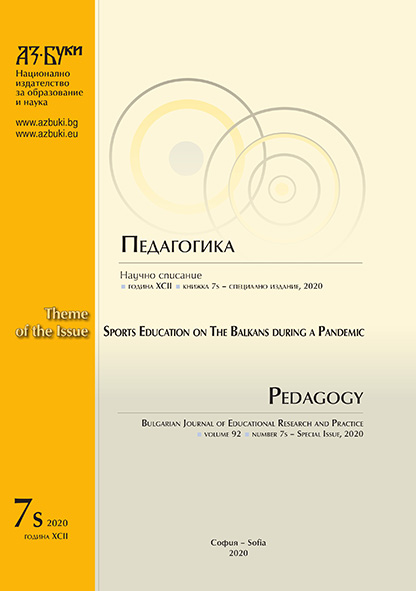Analysis of the Opinion of the Students from the National Sports Academy about the Distance Learning in Basketball in the Conditions of COVID-19 Pandemic
Analysis of the Opinion of the Students from the National Sports Academy about the Distance Learning in Basketball in the Conditions of COVID-19 Pandemic
Author(s): Mariana Borukova, Milena KulevaSubject(s): Social Sciences, Education, Vocational Education, Adult Education, Higher Education , State/Government and Education, Inclusive Education / Inclusion
Published by: Национално издателство за образование и наука „Аз-буки“
Keywords: asynchronous learning; faculty of Sports; faculty of Pedagogy; gender
Summary/Abstract: According to the declared state of emergency and lockdown in Bulgaria and in the world due to the pandemic of COVID-19, the last two months of the summer semester of the academic year 2019/2020 students from the National Sports Academy “Vassil Levski” (NSA) continued their education from a distance through the e-learning platform of the Academy, in which educational materials for the different disciplines were uploaded. The aim of this study is to examine the opinion of first-year students of NSA about the distance learning in basketball, which under normal circumstances is conducted in the hall. The study also aims to make a comparative analysis of the percentage of the answers received by the criteria: faculty (Sports and Pedagogy) and gender. Research methodology: the students were provided with a questionnaire containing 14 questions. The survey was anonymous and not mandatory. It was completed by 106 students (53 men and 53 women) from the first year of the Faculty of Sports and the Faculty of Pedagogy. To achieve the aims of the study, the following methods were applied: a review of the specialized literature and conducting a survey. Mathematical-statistical methods: the results were processed with SPSS 23, using frequency analysis by one-dimensional and two-dimensional frequency distribution, and comparison of the distribution of features with Pearson's χ2 criterion.
Journal: Педагогика
- Issue Year: 92/2020
- Issue No: 7s
- Page Range: 291-301
- Page Count: 11
- Language: English
- Content File-PDF

